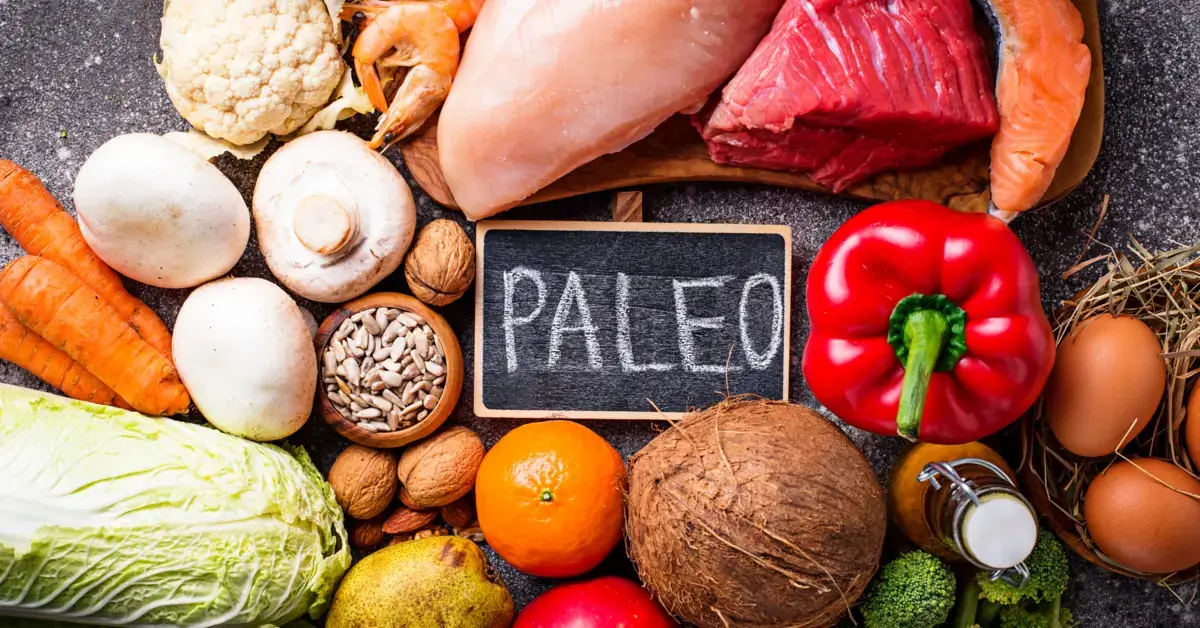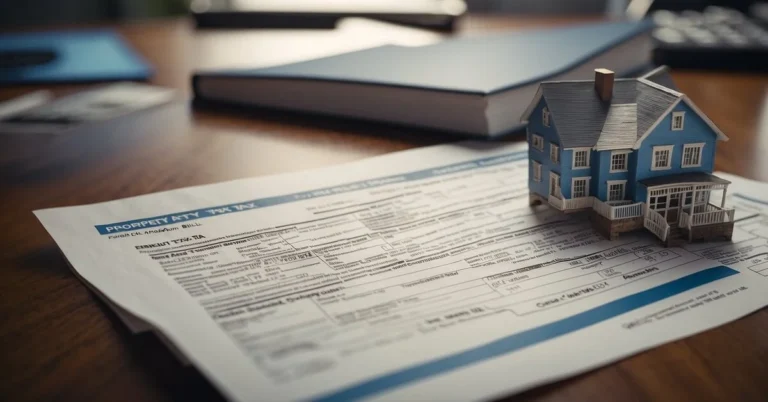Budget paleo meals make it possible to enjoy a healthy, unprocessed diet without breaking the bank. With smart shopping and creative cooking, affordable ingredients can be transformed into delicious paleo-friendly dishes. From economical meat cuts to seasonal veggies, discover how to satisfy your paleo preferences while keeping your finances in check.
Budget Paleo Meals – Understanding The Basics
When I first explored budget paleo meals, I discovered the paleo diet is more than just a way of eating—it’s about returning to the nutritional roots of our ancestors. This means focusing on whole foods that would’ve been available in the Paleolithic era.
Defining the Paleo Diet
The paleo diet is often referred to as the “caveman diet” since it emulates the eating patterns of ancient hunters and gatherers. This dietary plan eschews processed foods in favor of what could be hunted or gathered—such as meat, fish, vegetables, and fruits. Grains, legumes, refined sugar, dairy, and anything artificial are not on the paleo menu. The idea is to consume foods that are both gluten-free and grain-free, with a focus on organic options when possible.
Benefits of Paleo Eating
One of the key benefits of the paleo diet is the intake of a diverse range of nutrients obtained from consuming a high-protein and high-vegetable diet. By cutting out highly processed foods and grains, many followers report improvements in energy levels and a reduction in inflammation. Healthy fats from sources like avocados and nuts are encouraged, which can support heart health.
Paleo Diet Foods: What to Eat and Avoid
Understanding what to eat is crucial when following a paleo food plan, especially when trying to do so on a budget. Here’s a simplified list of what to embrace and what to avoid:
Eat:
- Protein: Beef, chicken, turkey, pork, fish
- Vegetables: Any, especially leafy greens
- Fruits: Preferably low-sugar options like berries
- Healthy Fats: Olive oil, avocado, nuts, and seeds
Avoid:
- Dairy: Milk, cheese, yogurt
- Grains: Wheat, oats, barley
- Processed Foods: Anything with additives or preservatives
- Legumes: Peanuts, beans, lentils
By sticking to these guidelines, I’m able to maintain my affection for budget paleo meals without the stress of straying from paleo principles.
Budgeting for Paleo
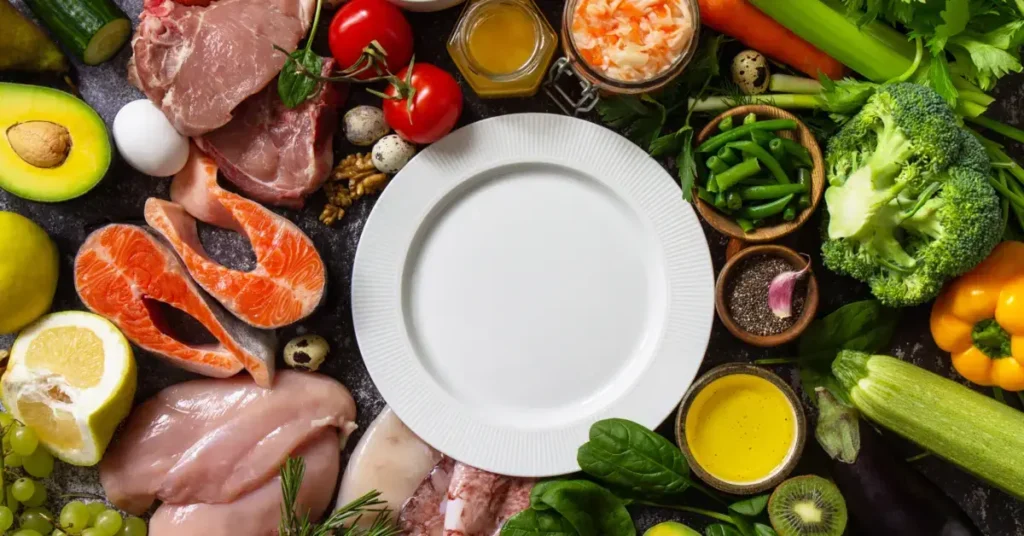
When I first started eating paleo, I realized that with a little bit of planning, creating budget paleo meals was entirely feasible. Crafting a budget that accommodates the nutrient-rich foods the paleo diet is known for can help in the long run.
Setting a Paleo Budget
My first step in controlling costs was to set a specific paleo budget. I took a look at my monthly income to determine how much I could comfortably spend on food. It’s crucial to be realistic; for instance, if I have $200 per week to spend on groceries, I make sure my plan includes nutritious, paleo-friendly options within this range.
Saving Money with Smart Choices
To save money, I focus on budget-friendly purchases. Buying in bulk can lead to significant savings. For items like nuts, seeds, and certain meats, I’ve found that wholesale stores offer better deals. Additionally, I always write a shopping list before I go to the store, which helps me stay on track and avoid unnecessary purchases that could inflate my grocery bill.
Paleo on a Tight Budget
Even the tightest budget can still accommodate a paleo diet. I realized early on that I didn’t need organic, grass-fed everything to stick to paleo principles. By prioritizing the items on which I preferred to splurge—like meat and certain vegetables—I could save money on other items by choosing conventional alternatives. Also, I keep an eye out for sales and stock up on staples whenever prices are down.
Strategic Shopping and Meal Planning
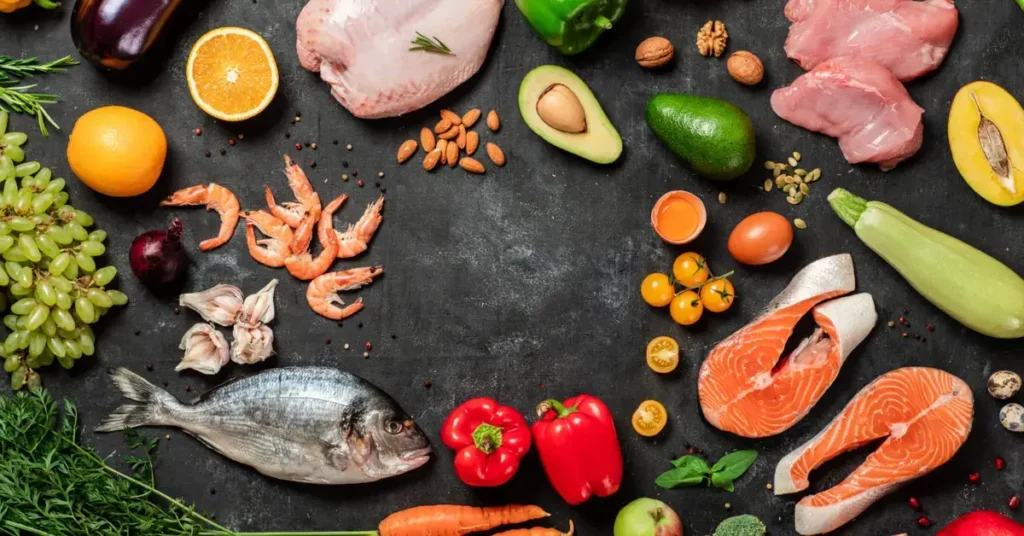
When it comes to preparing budget paleo meals, I’ve found that it’s all about smart shopping and thoughtful meal planning. By knowing what to buy, where to buy it, and how to plan around it, I can enjoy delicious and nutritious paleo meals without breaking the bank.
Creating a Cost-Effective Shopping List
To start, I make a comprehensive shopping list focusing on paleo staples that are energy-dense and cost-effective. I prioritize:
- Proteins: chicken thighs, ground beef, and eggs
- Vegetables: seasonal choices tend to be cheaper
- Fats: bulk nuts, seeds, and oils like olive and coconut
By including paleo recipes in my plan for the week, I avoid unnecessary purchases and stick to the essentials.
Weekly Paleo Meal Planning
For my weekly paleo meal planning, I pick a few recipes and repeat them. This simplifies cooking and shopping. Here’s an example of what a week might look like:
- Monday: Grilled chicken with mixed vegetables
- Tuesday: Beef stir-fry with cauliflower rice
- Wednesday: Repeat Monday’s meal
- Thursday: Repeat Tuesday’s meal
- Friday: Scrambled eggs with spinach and mushrooms
This meal plan strategy helps me save money and time, plus it takes the guesswork out of paleo meals.
Buying in Bulk
I buy certain items in bulk to save money. These often include:
- Meats: buying larger cuts can be cheaper
- Vegetables: frozen can be as nutritious as fresh
- Staple Items: nuts, seeds, and oils
Purchasing these budget-friendly staples in larger quantities reduces the frequency of shopping trips and helps me stock up on the essentials.
Preparing Budget-Friendly Paleo Meals
Sticking to a paleo diet doesn’t mean you have to spend a fortune on groceries. I’ve gathered some ways to create budget paleo meals that are both delicious and easy on your wallet.
Quick and Easy Paleo Recipes
When it comes to simplicity, quick and easy paleo recipes are the way to go. Starting with something as basic as eggs can lead to a variety of breakfast options, like omelets with spinach or a classic frittata filled with fresh vegetables like broccoli and kale. For a tasty and affordable lunch or dinner, try chicken breast cooked with herbs and served alongside roasted sweet potatoes. These ingredients are not only cost-effective but are also packed with nutrients.
Bulk Cooking and Freezing
Bulk cooking and freezing is another fantastic strategy. It not only saves time but also ensures that you have ready-to-go meals on hand. Consider making a large batch of paleo chili using ground meat and vegetables, then divide it into portions that can be frozen and reheated later. It’s easy to incorporate a mix of vegetables, like carrots and zucchini, and even sweet potatoes to make your chili hearty and filling.
Paleo Slow Cooker and One-Pot Meals
A slow cooker is your best friend for making budget-friendly paleo meals with minimal effort. You can prepare a variety of one-pot dishes without having to spend a lot on expensive cuts of meat. For a savory dinner, toss in some chicken or beef, a medley of vegetables like kale or broccoli, and some herbs. One of my favorite dishes is a slow-cooked seafood stew – it’s flavorful, filling, and can often be made with more affordable seafood options. Plus, it frees up your time to focus on other tasks while your dinner cooks itself.
These approaches to making paleo meals more budget-friendly will help you enjoy nutritious, whole foods without breaking the bank. Whether you choose speedy recipes or opt for time-saving bulk cooking, you can relish in the flavors of paleo eating and maintain a healthy diet while adhering to your budget.
Paleo-Friendly Staples on a Budget
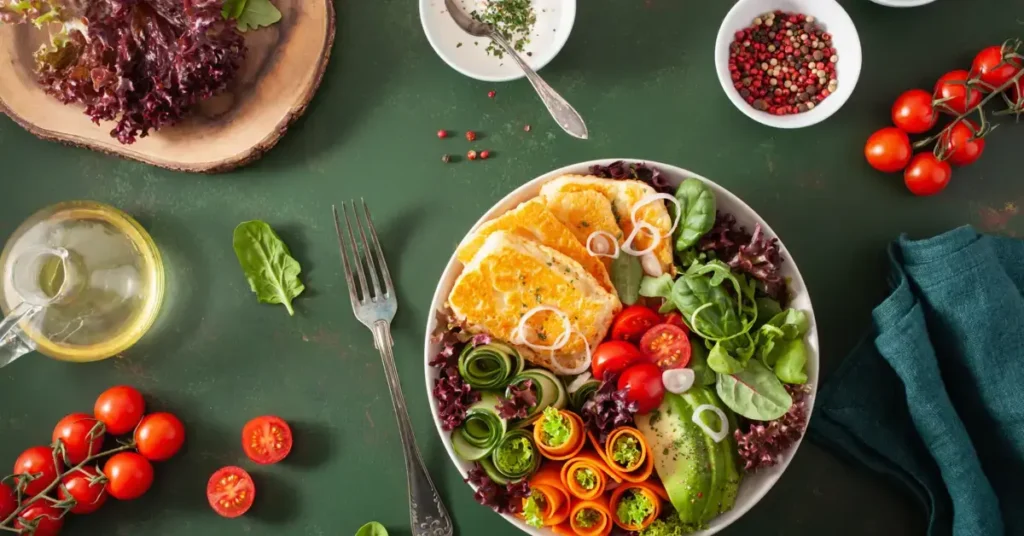
When I first explored budget paleo meals, I discovered that with smart choices, you can enjoy a variety of nutritious foods without overspending. Let me guide you through some wallet-friendly options to stock up on your paleo pantry.
Cost-Effective Protein Sources
Eggs are a staple in paleo diets, offering an affordable and versatile source of high-quality protein. You can often score deals by buying them in bulk. For meat and poultry, keep an eye out for sales and consider purchasing cheaper cuts like chicken thighs or ground turkey, which can be just as delicious and nutritious when prepared well. Seafood doesn’t have to break the bank either; canned fish, like tuna or salmon, can be economical choices that are rich in omega-3 fatty acids.
Affordable Paleo Fruits and Vegetables
To save on vegetables and fruit, my go-to strategy is buying in-season produce and visiting local farmers’ markets for deals. Here’s a quick list of some budget-friendly options:
- Vegetables: Kale, carrots, and sweet potatoes
- Fruit: Bananas, apples, and oranges
Buying frozen can also be a great way to save money, ensuring you have a steady supply of nutritious options on hand.
Healthy Fats and Oils
Healthy fats are a cornerstone of the paleo diet. Avocado and olive oil are my favorites for everyday cooking, and they provide essential fatty acids that are good for the heart. Buying in larger quantities can be more cost-effective. Coconut oil is another great choice, perfect for cooking at high temperatures, while nuts and almond butter can be used in moderation to add rich flavor and texture to your meals. Remember to look for store brands or bulk options for added savings.
Optimizing Nutrition While Saving Costs

When I’m prepping budget paleo meals, my focus is always on getting the most nutritional bang for my buck. Read on to find out how you can balance those essential macronutrients, incorporate nutritional powerhouses, and keep an eye on hidden costs that could hinder your paleo progress.
Balancing Macronutrients on a Budget
I’ve learned that the paleo diet emphasizes high-quality protein and healthy fats while keeping carbohydrates moderate. To save on protein, I opt for cheaper cuts like chicken thighs over breasts or I purchase in bulk. For crucial fats, I choose to buy large containers of oils like olive or avocado oil, which lasts longer and works out cheaper per unit. Kale and broccoli, filled with micros, can be cost-effective when bought in season or frozen.
- Protein sources: Chicken thighs, canned tuna, eggs
- Healthy fats: Olive oil, avocados, nuts
- Vegetables: Broccoli, spinach
Incorporating Superfoods
Superfoods like blueberries and chia seeds may seem pricey, but they’re dense in nutrients and a little goes a long way. Chia pudding can be a delicious budget-friendly breakfast or dessert, packed with fiber and healthy fats. Organic isn’t always necessary, but for certain items like berries or leafy greens, I prioritize them to avoid pesticides.
- Budget superfoods: Chia seeds, kale, canned or frozen blueberries
Avoiding Hidden Costs
I’ve noticed hidden costs can creep up, so I keep an eye out for them. Snacking on nuts or organic products can quickly add up, so I ensure to measure my portions. I skip convenience foods labeled as ‘paleo-friendly’ as they’re often overpriced. Cooking in batches and meal planning are my go-to for maintaining my paleo lifestyle without breaking the bank.
- Avoid: Overpriced paleo snacks, unchecked portion sizes
- Embrace: Meal prep, seasonal produce shopping
Creative Paleo Meal Variations
When it comes to preparing budget paleo meals, creativity is your best friend. By reimagining leftovers, exploring international flavors, and leveraging seasonal produce, paleo eating stays exciting without breaking the bank.
Transforming Leftovers
I always look at leftovers as a blank canvas for the next day’s culinary creation. Take last night’s beef stir fry and layer it over a bed of fresh greens for a nourishing salad. Or, morph your leftover roasted chicken into a savory egg roll in a bowl, marrying it with sautéed veggies and a tangy coconut sauce.
International Paleo Recipes
There’s a world of flavors waiting to spice up your paleo plate. Try a Paleo Turkey Chili that infuses a touch of Mexican cuisine or an Italian-inspired fish stew that’s both hearty and heart-healthy. Every international dish offers a chance to adapt and enjoy new, budget-friendly recipes in a paleo-friendly way.
Seasonal Paleo Dishes
Savor the seasons with dishes that highlight the produce of the moment. Summer might bring shrimp-fried cauliflower rice, bursting with fresh herbs and zesty lime. Come fall, nothing warms you up like a bowl of homemade roasted butternut squash soup. And a robust chicken chile verde can capture the essence of winter comfort. Using seasonal vegetables not only supports local farmers but often cuts costs as well.
Paleo Snacks and Desserts
When I think of budget paleo meals, I often look to snacks and desserts as a way to satisfy my hunger and sweet tooth without breaking the bank. Here, I share some of my favorite ways to whip up quick paleo-friendly treats that are both healthy and wallet-friendly.
Healthy Snacking Options
My go-to for healthy snacking revolves around simplicity and nutrient-dense foods. I love creating snacks that are not only delicious but also genuinely good for me.
- Fruit & Nut Delight:
- Slice and core apples, then top them with a spoonful of almond butter and a sprinkle of cinnamon.
- Raw nuts, like almonds or walnuts, provide a satisfying crunch and are packed with proteins and healthy fats.
- Vegetable Chips:
- Kale or sweet potato chips baked until crisp offer a phenomenal way to enjoy vegetables.
Often, I opt for recipes that use almond flour or coconut flour, as these are staple paleo ingredients that provide a fantastic base for countless snacks.
Indulgent Yet Economical Paleo Desserts
Who says that paleo desserts can’t be luxurious and friendly on the wallet at the same time? I believe that with the right ingredients and some creativity, indulgence is entirely within reach.
- Cookies & Treats:
- The richness of almond flour lends itself beautifully to Paleo Chocolate Chip Cookies, making them chewy and satisfying.
- For a no-bake option, I adore making Chocolate Almond Butter Cookie Cups with dark chocolate and a hint of sea salt.
- No-churn Ice Cream:
- Combine frozen bananas and a touch of coconut milk in a blender for an effortless paleo ice cream alternative that’s creamy and customizable with your favorite toppings.
I find that using wholesome ingredients like fruits, nuts, and natural sweeteners doesn’t just fit my paleo lifestyle, but it’s also kind on my budget. Plus, they can turn out to be incredibly decadent! For instance, I’ve stumbled upon some wonderfully Easy Chocolate Chip Skillet Cookies that not only please my sweet tooth but also don’t demand expensive ingredients. Now, isn’t that sweet success?
Making Paleo Sustainable

Embracing a paleo lifestyle can be both healthful and cost-effective if approached thoughtfully. I’m excited to share ways you can adapt the paleo diet into a sustainable part of your routine without straining your wallet or contributing to food waste.
Building a Long-Term Paleo Lifestyle
When I first decided to adopt a paleo lifestyle, I realized that planning was crucial for sticking to a budget. Shopping for seasonal produce and more affordable cuts of meats can keep costs down—ground meat, for instance, can be both economical and versatile for a wide variety of paleo meals. Another tip I learned was to bulk-buy and properly store items like nuts and seeds that have longer shelf lives.
Investing time in batch cooking once a week is a lifesaver for me. It ensures I have 30 compliant meals at a moment’s notice, reducing the temptation to deviate from paleo guidelines due to time constraints or lack of preparation.
Reducing Food Waste
A critical part of sustainable eating habits is minimizing food waste, which, incidentally, also helps with staying on budget. Organization is key. I make sure to:
- Label leftovers with dates and rotate them to the front of my fridge.
- Repurpose remnants of veggies or meats into soups or broths.
- Use freezing to extend the life of produce and leftover meals.
Creativity goes a long way too. For example, starchy items like sweet potatoes are not only budget-friendly but can be used in a multitude of recipes, reducing the likelihood of them going unused.
By sharing these practices, I hope to show how feasible and rewarding it is to maintain a budget paleo lifestyle while being mindful of food waste.
Frequently Asked Questions
How to make paleo affordable?
To keep paleo affordable, I focus on buying in bulk, choosing seasonal produce, and planning meals. This prevents last-minute purchases that can be expensive.
Is a paleo diet affordable?
Yes, a paleo diet can be affordable if approached wisely. It involves selecting whole, unprocessed foods and can be cost-effective with smart shopping strategies. For instance, purchase less expensive cuts of meat and use them in versatile ways.
Can you eat quinoa on Paleo?
No, quinoa is not part of a paleo diet. Despite being a nutrient-rich seed, paleo guidelines exclude it since it’s considered a pseudo-cereal and our Paleolithic ancestors didn’t cultivate grains.
Is tofu allowed on paleo?
Tofu is not allowed on the paleo diet as it is derived from soybeans, which are legumes. The paleo philosophy excludes legumes due to their high phytic acid content and potential for digestive issues.
What are the weaknesses of paleo?
One weakness of the paleo diet is it can be restrictive, potentially leading to nutrient deficiencies if not carefully balanced. It also eliminates whole grains and legumes, which are affordable sources of nutrients in a typical diet. Another concern is social constraints; dining out and attending social gatherings might require extra planning.
I hope you found some inspiration or useful tips in our article on ’budget paleo meals’! If so, I’d love to hear your thoughts and ideas in the comments below! And if you’re looking for more insightful content, don’t hesitate to explore our other articles:
- Budgeting For Meals: Tips To Save Money On Your Grocery Bill
- How To Budgeting For Dummies
- Budget Workshop Essentials: Planning Financial Success
- Budget Book Ideas: Simple Strategies for Financial Empowerment
Your comments help us create better content for you. Happy reading!

